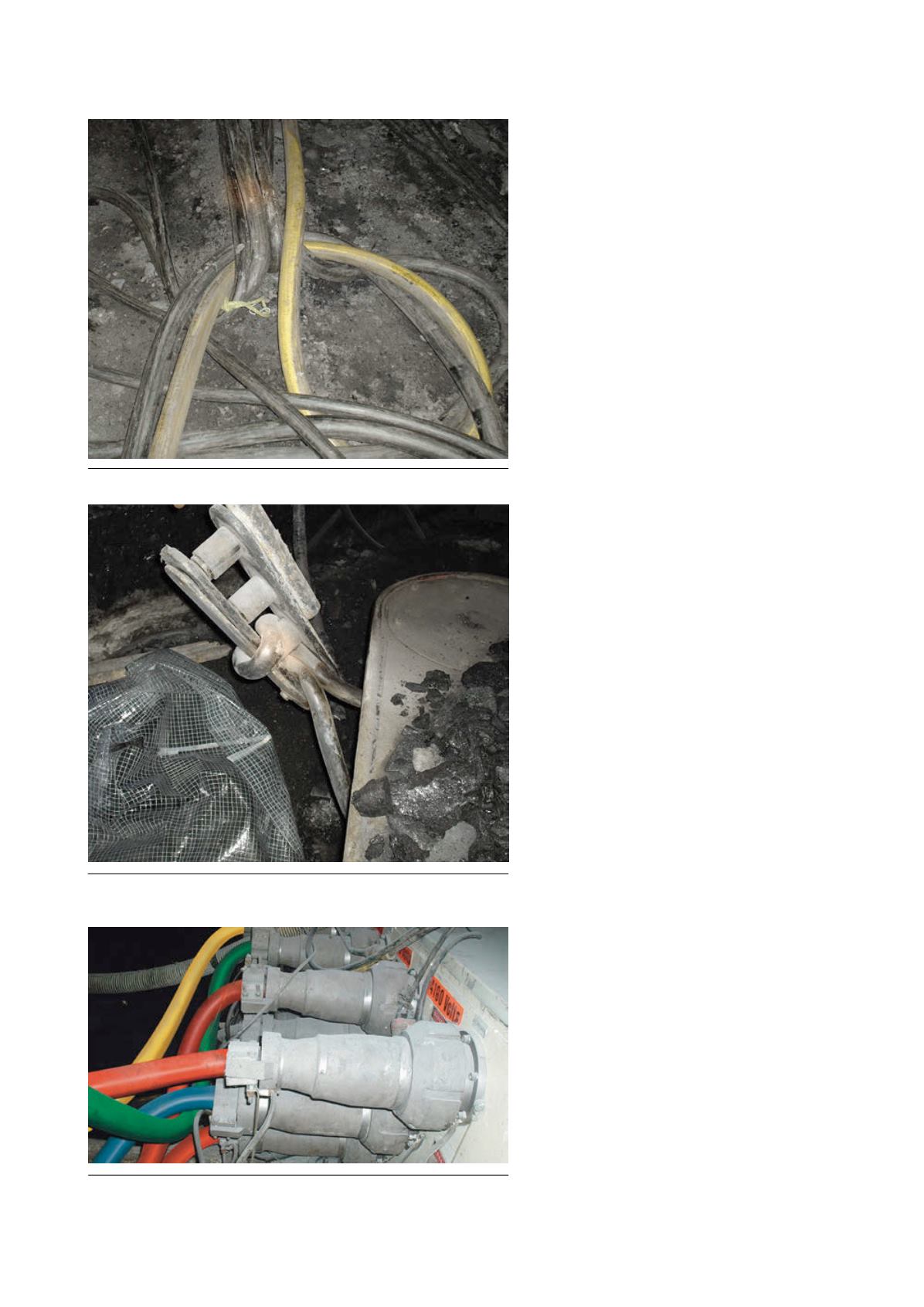
cables offer a lower up-front cost but generally
deliver higher downtime and replacement rates.
Mould-cured jackets are higher in up-front cost, but
mines recover this in longer service life, less
downtime and lower total cost of ownership.
A completely different type of jacket material,
which is designed for extremely harsh mining
conditions, is thermoplastic polyurethane
(commonly known as TPU in North America and
PUR globally). PUR jackets are particularly
beneficial to cable life on shovels and other opencast
excavators, but offer a good cost/benefit ratio when
used underground in harsh conditions on
continuous miners and longwall shearers.
Compared to any mould‑cured product, PUR jackets
offer five times more abrasion resistance, double the
tear and tensile strength, lighter weight (up to 8%)
and only a small loss of flexibility.
Excellent trailing cable design and manufacture is
the most critical step for high productivity, but when
put into service its biggest challenge is presented by
humans. Mark Fuller, Mining TEK Center Manager
for Nexans, has designed, manufactured, field
monitored and evaluated damaged mining cables
for more than 25 yr. During this time, he has seen
just about every type of human-induced cable
failure.
“Trailing cables are designed to perform specific
functions when energised. While they appear to be
extremely strong and robust, they are not designed
to be run over by a loaded 30 000 kg shuttle car or
dragged down an entryway by a single rope,”
explained Fuller.
Nexans AmerCable, which has been producing
mining trailing cables since the 1920s, identifies four
basic causes of trailing cable failures in mines:
n
n
Mechanical damage.
n
n
Current overload.
n
n
Excessive tension.
n
n
Poor temporary splices.
Mechanical damage
Mechanical failure in many cases, such as run-overs
by mobile equipment, is difficult for shift workers to
identify as there may be little to no visible damage on
the jacket. However, inside the cable assembly the
insulation may be ruptured and the annealed copper
mashed. The worst case is where the insulation
rupture is only partial and nuisance tripping of the
circuit breaker results in unscheduled downtime.
Another very common cause of mechanical damage
is exceeding the minimum bend radius. This usually
happens when the cable is dragged from place to
place by a single rope or narrow sling. This single
tie-point can generate a 1x or 2x bend radius instead
of the recommended 6x – 8x the cable diameter.
Exceeding bend radius causes extensive internal
Continuous miner cable and water hose (yellow) being dragged.
Shuttle car cable in anchor. This keeps mechanical tension off of the electrical
termination.
Power centre with coloured Tiger Brand sheaths for safety.
54
|
World Coal
|
March 2016


